John Disson - Growing up in St John's Wood in the 1940s and 1950s
My family
From archived certificates and various census returns I soon discovered that my family had been residents of St. Johns’ Wood since early in the nineteenth century, living at addresses such as Townshend Cottages, Charles Lane, Charlbert Street, Bentinck Square, Cochrane Street and Woronzow Road.
My mother, Lilly & father Joe, together with Bridget, my maternal grandmother, had lived at 21 St John’s Wood Terrace from the mid- Twenties. My brother Derek arrived in the early Thirties. I was born during an air-raid in a basement shelter at University College Hospital. Rebecca, my paternal grandmother, had ten children, so aunts, uncles and cousins were many, and my extended family were all to be found living nearby.
Looking back on childhood memories, the sun always seem to be shining yet, conversely, my very first memory of being out in the Terrace was during the winter of ’41/42, when I was almost two years old. A magical moment that stays in the memory for ever. I can see it now, being brought out of the house by brother, Derek and cousin Roger to walk in snow for the first time. Where was white magical wonderland? I can still see the back iron railings set against the brilliant white background along our front path.
Wartime childhood
I harbour fond memories of a childhood spent in the Wood, but my first five years were spent with daily life threatening attacks from enemy bombardment.
For a small child living through this it becomes a normal way of life and I still have moments etched in my mind of explosions, windows blown in. School friends who had been living in Henstridge Place not never to return to school from the aftermath of a massive bomb strikes on their homes. This kind of stress during that time cannot be imagined, by today’s standards.
Although memories from the early years of my life are mostly happy, unfortunately some of the other wartime memories are indelibly printed on my mind, particularly the countless nights spent seeking safety in air-raid shelters. We had an Anderson shelter in our back garden which consisted of a hole dug into the ground, a curved piece of corrugated iron placed over it, and covered with the soil from the hole. Inside we had four bunk-beds, safe but never much use should a bomb drop nearby. Eventually, as a result of ‘shelter rash’, damp and the limited amount of room in the Anderson, we migrated to the shelters in the street, two of which were in the Terrace: a brick one built in the roadway opposite Ordnance Hill, and a concrete one opposite Aquila Street. We soon found out that all the bunks in the these shelters were reserved with some people spending all day in there. No room at the inn! Next stop was the St John’s Wood tube station, where again all the bunks were taken but we found a vacant spot on the floor, in the weighing scale recess on the south bound Bakerloo platform. Here, there was no chance of rolling onto the line and it was here that we spent most nights for the rest of the war.
One night during a particularly heavy air-raid, a number of horses from the United Dairies yard had bolted out into Acacia Road. Once out in the street, they immediately went into work mode by separating and following the route of their daily milk round, minus the float. When my Mum saw our delivery horse trotting down the Terrace, she called out “woah!”. The horse stopped in its tracks, allowing my Mum to pacify it until someone from the Dairy arrived to round up all the horses. That morning the milk delivery was late!
It was from these kinds of bombardments that we devised the game Find the Shrapnel. The day after an air-raid, we would scour the streets for pieces of metal, whether from our own exploded shells or from fragments of enemy bombs. There was always plenty to be found. imagine today taking something home like that.
Many troops were to be seen on the streets around the Wood, and a number of apartment blocks had been requisitioned to house them. One particular block was Viceroy Court was used by the RAF. One December, we visited there for some carol singing. Being by far the youngest of our group, I was stood at the front, and, looking up, I could see that we had attracted a large audience with the airmen leaning out of the windows. Coins soon began to rain down on us, and, being the non-singer, it was down to me to pick up the pennies. As soon as I touched one, it made my fingers sting. With pennies falling all around the singing stopped, and my brother, cousin and friends all attempted to pick up the money, but they also had their fingers stung. We were all hopping around and laughing, but the greatest amusement was being had by the airmen. They had heated up the money making it red-hot. All good fun, and we enjoyed the joke with them. At the time, those guys were all involved on dangerous missions and, I like to think that, it wasn’t the last joke they ever enjoyed.
Barrow Hill School in wartime
I started school in the nursery class at Barrow Hill Road in 1943; Miss Walker was the teacher, there were plenty of toys available, including a sandpit in the classroom. The afternoons were spent having a quiet sleep on something similar to camp beds; I can’t remember if there was ever an air-raid shelter in the school but, as young as we were, we were taught how to crouch under any available table just in case a bomb should drop nearby. During the war period, fire engines were to be found stationed in the lower playground at the end of Bridgeman Street.
During those turbulent years, actions had to taken on the hoof as overnight at Barrow Hill Road School we found new class mates arriving. A mass evacuation of Gibraltar and, I believe, Malta had taken place and a number of women and children were being housed in St John’s Wood, mostly in requisitioned apartments in Avenue Close. By day the children were placed alongside us in the school and for the time they were there we all seemed to get on together.
You always remember your favourite teacher and the one who had the most influence on my early education was Miss Bates, a strict ‘old lady’, yet she stands out above all others. In those days, I think it was normal practice to have the same teacher for two or three years teaching all subjects. She taught us how to read and write and she was one who would never hold back with a quick rap across the knuckles if you didn’t get things right.
One of the most pleasant abiding memories of Barrow Hill is one where everyone would have the choice of a small Christmas present. This was by courtesy of Sigmund Goetze who lived in the house on St John’s Wood Roundabout. We never knew the true reason behind his philanthropy but it was a highlight of the year to receive this small present. One present I had was a watercolour painting set that I kept for many years, unfortunately it was mislaid when I moved home, (echoes of Rosebud perhaps).
In the late forties the school decided to start a football team. The difficult part was that we all had to provide clothing coupons to get the shirts and shorts. It was soon after this that the school decided to adopt a uniform. In fact, it was just a cap, half red, half blue with a red peak. Pretty awful! The idea didn’t last too long, but I still wish my Mum had kept mine.
Early post-war years- bomb sites as a playground
During those times, unlike today’s children, we would safely make our own way home from school. Always at home-time, at the top end of Bridgeman Street, stood Peanut Annie. She was a little old lady who, from hindsight, reminds me of the Wicked Witch of the East, minus the hat, about five feet tall and dressed down to her feet in a long black dress and cloak. She also had a small Jack Russell type dog sitting by her side. She would stand there every day selling Askeys wafers of all things, the sort in which you used to sandwich a slab of ice cream. She would hold a number of wafers in her hand with the large tin box of wafers on the floor by the dog. I can never recall anyone ever buying any from her. Were the wafers past their sell by date or what!
When growing up in the early post war years, not for us the sanitised play areas of adventure playgrounds. We had ready-made places to play in, all having been landscaped by German air-raids. These were bomb-sites, or, as we preferred to call them, ‘debris’. There was Ordnance Hill, Townshend Road, Henstridge Place, St John’s Wood Park, Finchley Road, Newcourt Street, Culworth Street and the closest debris to home was Aquila Street.
This was, and still is, a cul de sac. Tucked away in the corner, you would have found a wartime emergency water tank providing a haven for frogs and newts. We spent many hours punting around in the tank on doors made from the bombed houses, using them as boats for water-bound battles.
On the debris, we would build our campsites, also made from doors, and with some of them placed across the top as a roof we were always kept dry; campfires were a regular thing and I still haven’t tasted a baked potato as good as the ones that we would throw into the fire, when dragged out and burnt black, delicious!
In the far right-hand corner behind the water tank was a small single- storied factory named Cardemons. Previously, this building had been the local sorting office. We could never find out what the factory manufactured and hardly anyone ever entered or exited the place. It appeared to be owned and run by someone named Eric Nuesbaum. He drove an old Jaguar and,he spoke with a German or Austrian
With Aquila Street being a cul de sac, and with the absence of cars, it meant we could regularly play cricket in the middle of the road. The wicket was always made with two beer crates from Yardley’s off-license, (now Foxtons). Mr Rogers ran the off-licence which when entering always seemed to be empty, so empty that there was an echo. All that could ever be seen in the shop was some R Whites lemonade and a few pint and quart bottles of beer, all randomly scattered around. From doing the deliveries on his trade cycle, I seem to remember Mr Rogers always had his trousers held up by cycle clips.
In Aquila Street you could find a small greengrocers lockup. It would be wrong to call it a shop as it had no windows or lighting and, with the absence of any shelving, produce was scattered all around the floor. It was run by a tubby little man named Teddy Elcome, who always wore a cap, an overcoat and a pair of mittens, and apart from a permanent drip on his nose, he also had poor eyesight. For anything bought from old Teddy, in order to cancel the coupon in your ration book he would just run a pencil across it. So, needless to say, the locals would all go home and rub out the pencil marks. Everyone could then look forward to buying another couponless helping of cabbage or potatoes. What you might call the darker side of the ‘wartime black market’? In his defence of all involved it kept us fed.
There has always been a football team in the Wood, and we started ours in 1953. The photograph on the left was taken prior to our first game, all looking ready to do battle. We lost 17 nil! We even had the picture published in a football magazine, but the editor wanted to know why we only had ten players. Well, someone had to take the picture! Four years later, not only had our appearance improved, so had the results. Finally on the right in ’64 we had another change of shirts and playing regular home games on Sunday mornings in Regent’s Park, with occasional away games played at either Parliament Hill or Hackney Marshes. Our regular meeting point would be outside the Pitts Head pub; in those days we never had the luxury of having a changing room. Rain or shine, we would all get changed in the open.
Everyone needed coal to be delivered; central heating for houses was not an option. The coal was held in bulk in the coal-yards at Lisson Grove. First thing each morning, the coalman would shovel all of the coal he would deliver that day into sacks, each one weighing one hundredweight and his cart would carry over sixty bags; the coal-cart was always drawn by a lovely large carthorse, with the sacks of coal being stacked on the back of the open cart. Whatever amount of coal delivered, (ten bags is a half ton), the coalman would leave the empty sacks on the pavement for you to count, ensuring you had the right amount delivered. At 2/6d @ cwt [hundredweight] you had to be sure.
The dustmen would call every Tuesday and Thursday. I say call because they would knock on your front door so as to come through to the back garden where the [coal] bins were sited. They would then carry the bins through the house to empty into the dustcart, and they were proper galvanised bins, not the modern day plastic ones with wheels that now litter the streets.
In Charlbert Street, during the early fifties the De Walden Institute hosted a Youth Club, it was overseen and ably run by a very understanding Joan Tarrent. It was a popular meeting place with people coming from outside of the Wood to join because of its success; it was strongly rumoured at my time of membership that one notable member was Jackie Collins, then only being known as the sister of Joan.
We were able to continue playing on the bomb-sites until the early fifties when serious rebuilding of the district commenced, but for a playground there remained St John’s Wood Park, the entire area having what appeared to be abandoned houses, all vacated during the war, magnificent properties with some having cobbled stable yards, imagine this in the centre of London. Many of the houses were in first class order showing no sign of damage, just neglect, why were they ever vacated, was it just because of the fear of being bombed and an opportunity to escape to the country?
The ghosts of St Johns Wood Park
One beautifully large house set within the triangle that is now Queensmead was particularly impressive, as you entered the entrance hall you were presented with a wide marble staircase that wound off to left and right, Manderley right here in the Wood, was Mrs Danvers anywhere to be found? This was just one example of many of the properties to be found there. In each house ghosts of the past were ever present, in the basements where you saw the servants calling panels you almost expected the bell to ring and the room indicator to move just as if there was someone there, waiting patiently but never to be attended to, very scary!
It was surely a crime of Philistine proportions to allow these properties to rot and then pulled down, today it would never be allowed to happen for without question these houses would be worthy of being listed, even a conservation zone could have been established to protect them; regretfully in their place was erected a string of featureless red brick urban dwellings together with some very ordinary apartment blocks all of little or no architectural merit!
Coronation 1953
About 30 pre-fabs were built on what was once the large bomb site of Henstridge Place, (now Robinsfield School), but they were not there for very long for by 1953 the site had been cleared and it was there that we celebrated the Coronation with a big children’s party; for the children who had once unfortunately lived there just ten years earlier it had been a place of sadness, but I’m sure they would have enjoyed being able to attend the party.
On Saturdays with a number of friends I would catch a bus on the Finchley Road where a penny fare would take us to the Odeon Swiss Cottage, Saturday morning pictures was the highlight of the week, most usually featuring a cartoon, a Tom Mix serial and a Hopalong Cassidy cowboy film featuring Gabby Hayes, I don’t think we ever heard a word from any of them, with so much noise going on who cared, it was a time to enjoy. On the way home from the pictures we would “explore” all of the houses along St John’s Wood Park; it was here during the war as part of the ‘Dig for Victory’ project my Dad was allowed to have an allotment in one of the gardens. Summertime was best of all when the trees in the gardens were laden with fruit, so scrumping was always on the agenda with apple and pear trees in many gardens, but most memorable was a beautiful mulberry tree across the road on the corner of Marlborough Place and Finchley Road, after an hour spent in the tree you finished up covered in juice and stained all over red, ‘just wait till you get home’.
Family entertainment would mean getting a number 2 bus or a 113 to go to the pictures at the Odeon Swiss Cottage or even a 74 to the Gaumont Camden Town, each cinema showing a double feature and never duplicating each others films; you could arrive at anytime during the performance and you would only leave when the film came back around to the part you first saw, those were the days. Occasionally a visit to the The Metropolitan Theatre in the Edgware Road would be in order if a well known act was on stage.
In years gone by there was always a definite limit as to where the Wood began and where it ended, now the boundaries have become stretched to breaking point. Even the back end of West Hampstead together with Swiss Cottage have been allowed to creep into the Wood, Boundary Road should be keeping these two at bay. Although with the gentrification of Primrose Hill we now find that area has assumed it’s own identity with the boundary of the Wood falling back to where it belongs by following the old Council boundaries between Hampstead and St Marylebone. For me there are no grey areas regardless of spin placed upon it by those who can profit by some form of association. Quite simply just the name of St Johns Wood has itself become a marketable commodity and in doing so the true character of the place that had made it so unique has been lost.
About four years ago I unearthed a short home movie shot around the Wood during the late forties and early fifties, https://www.youtube.com/watch?v=9skT80qwdL8, those of you around at the time will recognise a number of the sites; unfortunately there must have been a lot more valuable moments of the film left on the cutting room floor. In an attempt to find out more about the film I was eventually able to contact the originator of the film but he had no idea where it had come from or who may have put it together, nevertheless enjoy as there remains some nostalgic moments in time for us all to share.
The end of Townshend Cottages
The last remaining heartbeat of the Wood was the late lamented Townshend Cottages; the cottages were composed of unique rows of small houses built in early Victorian days running down both sides of a cobbled road, with the houses on the left-hand side having front gardens. The two pictures of the Cottages shows both sides of the road with gardens running down the left-hand side; on the right-hand side the terraced houses had no front gardens, sadly this photograph was taken in 1949 just prior to their demolition. Rather than redevelopment, refurbishment would have preserved the character of the area, because with their demolition the houses in the Terrace, Alitsen Road and Townshend Road that backed onto the Cottages were also raised to the ground. If all of these properties had been sympathetically converted to incorporate flats with up to date amenities the accommodation made available would have been close to the number of apartments that have been constructed on the new estate. All that remains from the entire block where these properties once stood is the The Star and New Inn public houses.
The Barracks
With the demise of St Johns Wood Park and the entire block that now incorporates the Townshend Estate much of the character that was St Johns Wood has been lost forever, although some evidence of the properties that once existed along Charlbert Street is witnessed by the two houses and front gardens situated behind the water fountain. A recent loss is the Barracks on Ordnance Hill, though hopefully many of the historic out buildings will be now listed and incorporated into the redevelopment. I remember each morning at six o/clock when the troops were taking the horses on their exercise run, as the parade turned right from Ordnance Hill into the Terrace a bugle would start to play, my Mum and Dad were woken up with this for many years but eventually they reached breaking point. The result of this was that my Mum, then a pensioner. decided to pay a visit to the Barracks. She was given a audience with the Commanding Officer who in no time at all agreed to stop the bugle from sounding out. That’s what you call Care In The Community.
Most of my extended family have died or moved away. My Mum was the final member of the family to be found living in St Johns Wood until she passed away in 2000. I spread my wings many years ago, yet from growing up there lifelong friendships have been forged, and from time to time I still go back and meet up with my childhood friends. The demographics of the Wood have changed beyond all recognition, with the transient population we now have there are very few familiar faces on the street; needless to say I find it hard to believe that those who have taken up residence in recent years in the Wood will ever experience the same kind of close community we once had, or appreciate it’s warm and colourful past. That will simply remain the legacy for those people who had lived there through those bygone years.
Addition by Clifford Heathcote
My family lived on Woronzow Road (some still do I think!) and tales of the war years were handed down to me by my mum. My great grandfather had a builders yard (Joseph Disson & Son) near the junction of Woronzow Road and St. John’s Wood Terrace and built a shelter for the family there. Only one small problem: the guns on Primrose Hill. My great grandmother was a strapping woman who would have given Herr Hitler a right pounding and had no fear of his bombs, but as soon as those guns started she would freeze rigid and if the sirens were late, the family would be left to carry her down the road to the shelter while all hell rained down from above. Ultimately they took to sheltering in the cellar of their house at number 18, but this nearly ended in disaster when a string of bombs came down on Henstridge Place stopping only 100ft or so from them.
My mum also told of collecting shrapnel and using it to play hopscotch, and the V1s coming over. I’ve always been rather in awe of it all.

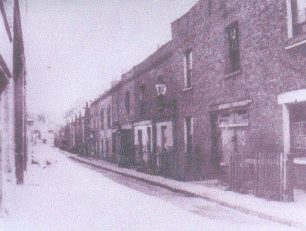
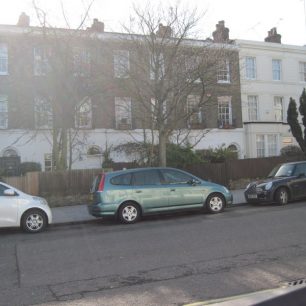
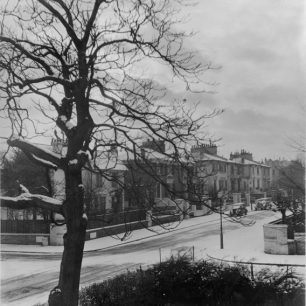
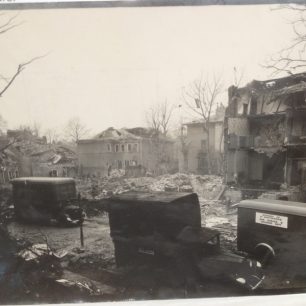
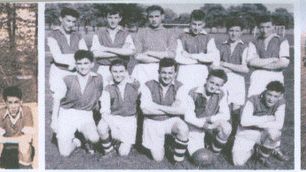
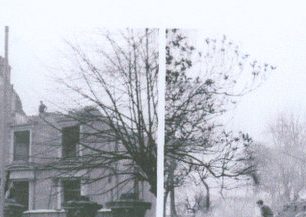
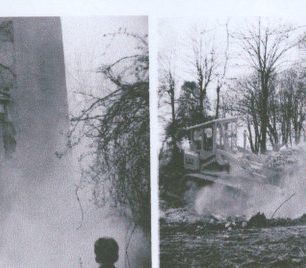
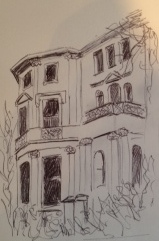
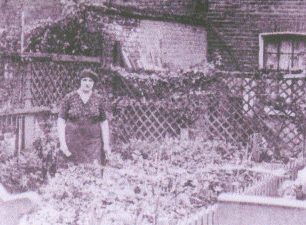
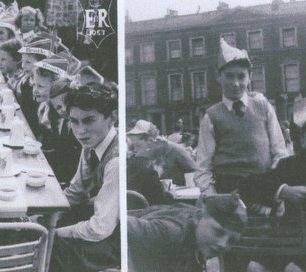
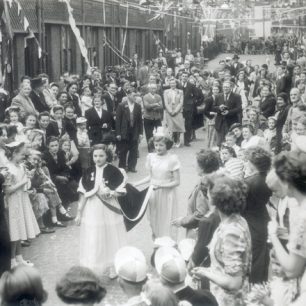
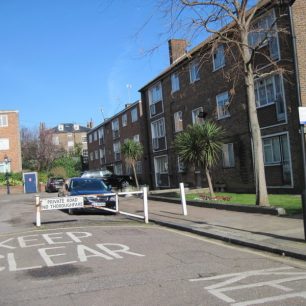
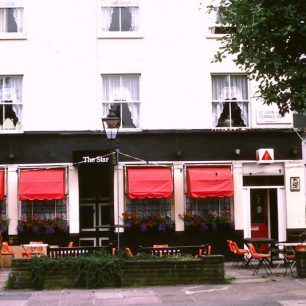



Comments about this page
Hi Pam, would love to get in touch with you, please if you read this can you email me on: nesta.phipps@hotmail.co.uk . I believe it was your cousin Beryl who we went to Jersey with, such a long time ago,Nesta
I was born in St. John’s Wood and lived in the army flats as my dad Douglas Gordon was a sergeant major in the Scots Guards .
I had an accident when I was about 4 in 1952; I stupidly fell of a balcony! Ended up in hospital for about 3 months. I remember the wooden horse in the barracks.
Clearly remember the camp beds at barrow hill school with the blue blankets.
We left and went to West Africa for 2 years .
Connie Eyles was Connie Gordon had 5 brothers and sisters . Ian Peter Bob Jean Gillian and then me Connie .
Does anyone remember the family?
4A Norfolk Road (adjacent to Woronzow Rd) 1969-1984. As seen( just) in one of your photos. Full photos free on request. House featured in BBC Sir John Betjeman’s TV documentary in 1970s /80s.
Nesta – I lived above your flat with my mum, dad and sister. You and I spent a holiday in Jersey with two friends and we used to go to jazz clubs to dance.
Pamela 10.10,2019
Just found this page about St. John’s Wood, how interesting. I wondered if anyone can remember our family, we lived at number 26 Aquila Street, my mother’s name was Elsie Grout and my father’s name was Jimmy Grout and my name is Nesta. Would be interested in hearing from anybody who remembers us. Thanks Nesta.
My mum was brought up in St John wood Terrace. Her name was Patricia Hall and her sisters were Maureen and Jean. Her father was Dennis and mother was Ada. My mum was born in 1945. Any information would be great as that’s all I know.
Hello Stan, I remember you, you lived with your Mum and Grandad and Nan. My best friend at the time, Herbie Lord, lived one floor up, I believe he was your cousin. Sadly Herbie had a seizure or stroke in 1969 at the age of 16 and was never the same again. I have often wondered over the years whatever happened to him, perhaps if you are still in contact with the family you could let me know.
I enjoyed reading these memories very much of SJW where my father was born and raised –
thank you for sharing
Thank you for this very interesting and informative page, John. My family lived in what was then Henry Street (now Allitsen Road) until 1940 or ’41, when they were bombed out and moved round the corner to no 5 St John’s Wood Terrace, where I was born in 1949. I attended Barrow Hill primary school and later, Kynaston in Finchley Road. My mother worked in Martin’s newsagents in St John’s Wood High Street, as well as a local patisserie and a greengrocers. I had an aunt and uncle who lived in Woronzow Road for many years. We occupied the Terrace house until 1981, then moved to Queen’s Grove. The family’s scattered far and wide now – eg I was told about your page by a cousin in Canada – and I currently live in the Midlands. There are very few of the clan still living in SJW, sadly, and things being as they are it’s unlikely we could ever afford to move back! I could go on for reams, but I’ll spare you that and simply thank you again for the nostalgic read. Best wishes.
Add a comment about this page